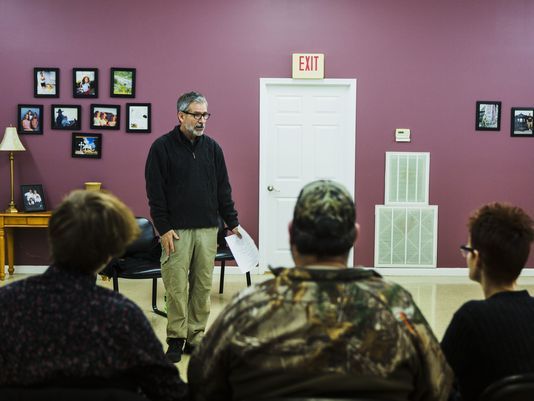
_______________________________
It’s no surprise that serious childhood trauma can lead people to use opioids. In the absence of healthy alternatives and an understanding of how experiences — such as living with a parent who’s alcoholic or depressed, divorce, and being constantly yelled at when you’re a kid — can make your adult life miserable, opioids help many people cope with chronic depression, extreme anxiety, and hopelessness.
But a new study has shown the significance of ACEs and ACEs-science-informed treatment: Each additional type of adverse childhood experience increases a person’s risk of relapse during medication-assisted opioid treatment by a whopping 17 percent. And each visit to a clinic that integrates trauma-informed practices based on ACEs science reduced the relapse rate by two percent, which can carry a person perhaps not to zero, but to a minimal risk of relapse.
“This research clearly shows the lasting impact that ACEs (adverse childhood experiences) can have,” says Dr. Karen Derefinko, lead author and assistant professor in the Department of Preventive Medicine at the University of Tennessee Health Science Center, and director of the National Center for Research of the Addiction Medicine Foundation. “I think it’s the first research to connect ACEs to relapse.”
Researchers from the University of Tennessee Health Science Center and the University of Memphis also found that more than half (54%) of people in a rural Tennessee opioid clinic relapsed, and the highest relapse rate was on the first visit. Almost half of the 87 people who participated in the study had an ACE score of four or higher — the average was 3.5, which is remarkably high. The study, “Adverse childhood experiences predict opioid relapse during treatment among rural adults”, appears in the September 2019 issue of the journal, Addictive Behaviors, and was published online last week.

“This study will help practitioners understand the importance of providing trauma-informed treatment,” says Derefinko. “Because of the stigma associated with drug use, it’s hindered health care workers’ understanding of why people use drugs and has led to an assumption that they’re bad people. This shows that trauma-informed care and providing resources does impact how well people can do. It’s also validating for patients and gives them a lot of hope.”
What are ACEs?
ACEs comes from the CDC-Kaiser Permanente Adverse Childhood Experiences Study (ACE Study), groundbreaking research that looked at how 10 types of childhood trauma affect long-term health. They include: physical, emotional and sexual abuse; physical and emotional neglect; living with a family member who’s dependent on alcohol or other substances, or who’s depressed or has other mental illnesses; experiencing parental divorce or separation; having a family member who’s incarcerated, and witnessing a mother being abused. Subsequent ACE surveys include many other types of trauma, including racism, witnessing violence outside the home, bullying, losing a parent to deportation, living in an unsafe neighborhood, and involvement with the foster care system.
The ACE Study is one of five parts of ACEs science, which also includes how toxic stress from ACEs damage children’s developing brains; how toxic stress from ACEs affects health; and how it can affect our genes and be passed from one generation to another (epigenetics); and resilience research, which shows that brains and bodies can heal from the effects of toxic stress.
The ACE Study found that the higher someone’s ACE score – the more types of childhood adversity a person experienced – the higher their risk of chronic disease, mental illness, violence, being a victim of violence and a bunch of other consequences. The study found that most people (64%) have at least one ACE; 12% of the population has an ACE score of 4. Having an ACE score of 4 nearly doubles the risk of heart disease and cancer. It increases the likelihood of becoming an alcoholic by 700 percent and the risk of attempted suicide by 1200 percent. (For more information, go to ACEs Science 101. To calculate your ACE and resilience scores, go to: Got Your ACE Score?)
High ACE scores also relate to addiction: Compared with people who have zero ACEs, people with ACE scores are two to four times more likely to use alcohol or other drugs and to start using drugs at an earlier age. People with an ACE score of 5 or higher are seven to 10 times more likely to use illegal drugs, to report addiction and to inject illegal drugs.
In this trauma-informed opioid clinic, every patient is employed
The research published in Addictive Behaviors focused on people who were opioid patients in the clinic of Dr. Daniel Sumrok, in McKenzie, Tenn. His simple, but revolutionary approach to treating opioid use disorder includes medication-assisted treatment (buprenorphine), group therapy, educating people about their ACEs and ACEs science, treating people with respect instead of blaming or shaming them, listening intently to what say, and integrating the healing traditions of the culture in which they live.

Relapse happens, says Sumrok, and if a patient relapses here, that doesn’t mean they’re kicked out of the program. “Trauma-informed care is employed to help the client understand the dynamic of that episode,” he says. It’s part of the process of healing, and healing is expected. Only occasionally has he had to discharge people from the program. Patients sign a contract to not divert or use buprenorphine with unsupervised other drugs that may be dangerous when consumed. They must be honest, and if they show aggression toward staff or other patients, that’s cause for discharge. “Members of the group and the integrity of the group are protected vigorously,” he explains.
“My patients seem to respond really well to this,” he says. (To learn more about his program, read “Addiction doc says: It’s not the drugs. It’s the ACEs — adverse childhood experiences”.)
“This was a labor of love, as is a lot of medical research,” says Derefinko about the study. “We didn’t have any funding. This is a rural clinic with paper charts, so it takes a lot of time. I had a small amount of money to pay someone to go through the charts, enough for two weeks of work. That was enough to read 87 files.”
Why is relapse so common?
The 54% relapse rate that Derefinko and her colleagues found is about the same as those reported in other studies of urban and rural populations, she says. The highest relapse rate — 34 percent — occurred after the first visit. They followed the 87 people over 26 visits. The first few days “seem to be the critical period,” she says. That’s because of the way the treatment is administered. Physicians require that patients stop taking opioids for one or two days before starting buprenorphine, so people go into withdrawal.
“It’s a very difficult transition for people,” says Derefinko. “In our clinic in Memphis, we try to give extra support during the first five weeks. People relapse a lot. But for every time they attend group therapy and get the buprenorphine, they’re two percent less likely to not relapse, she explains, and they “will eventually approach zero”.
Does this mean that if a person participates in 26 treatment visits, that they will reduce their risk of relapsing by 50 percent? “I’m not sure we can say that,” she says, based on the relatively small number of cases they reviewed. “We can say that you get better as treatment goes on. If we were able to review 400 files, we might be able to be more specific.”
“Treatment is still in its infancy,” says Derefinko. “Buprenorphine treatment is relatively new. A great aspect of using this approach is that people can receive medication on an outpatient basis. It allows people to get treatment that they wouldn’t otherwise,” since many treatment approaches are still residential.
Opioid dependence is a chronic disease, just like diabetes
Over the last few years, Sumrok has seen more than 1200 patients; about 175 people come to his clinic now. Every single patient has a job, he says. That’s a good marker for healing.
“I’ve had lots of patients who were living in cars when they came to this clinic,” says Sumrok. “They’d become estranged from their families. They’d pawned everything they owned and were stealing to feed their habit.”
He regards opioid dependence — as well as heroin dependence — as a chronic disease, like diabetes. So, people need long-term support. The average length of stay for his patients is eight years.
“You’re treating trauma,” he says, “not addiction.”
He offers a way of thinking about how hypervigilance, and the anxiety that accompanies it, lingers for a lifetime. Say you’re attacked by a lion and he bites off your foot. So, whenever you see a lion, or you go near the place where that lion bit your foot off, you’re going to relive that trauma. And anytime you think about having to go to where the lion attacked, you’re going to think about the attack. Or you might have to travel to where the lion lives, so you’re going to do drugs of some sort to alleviate the anxiety or depression about facing the lion. We live in a land of lions, if lions were ACEs. As a result, you’re always going to be on the lookout for lions, and if you’re dependent on drugs to cope, you’re going to constantly be thinking about where to get whatever dulls the threat of that lion.
In the case of people dependent on opioids, the hypervigilance never goes away, he says. With buprenorphine, supported by an understanding of how they use drugs to cope, and group therapy, people aren’t distracted at work, or with their family or friends, because they’re not hypervigilant. They feel physically and psychologically safe because they’re supported by their physician, family and friends. They have hope for their futures.
“We know that ACEs are higher in rural populations and access to opioids are higher in rural populations,” says Derefinko, “so the link between and ACEs and the rural population in the south-central United States makes a lot of sense. There’s also not a lot of research in rural populations, that’s why this is incredibly important.”
“Politicians and the addiction world will want to know about this research,” says Sumrok. “Politicians want to know what to do. To develop treatments that are effective, you have to understand what drives those behaviors. This is a treatment issue, not one that requires more laws.”

